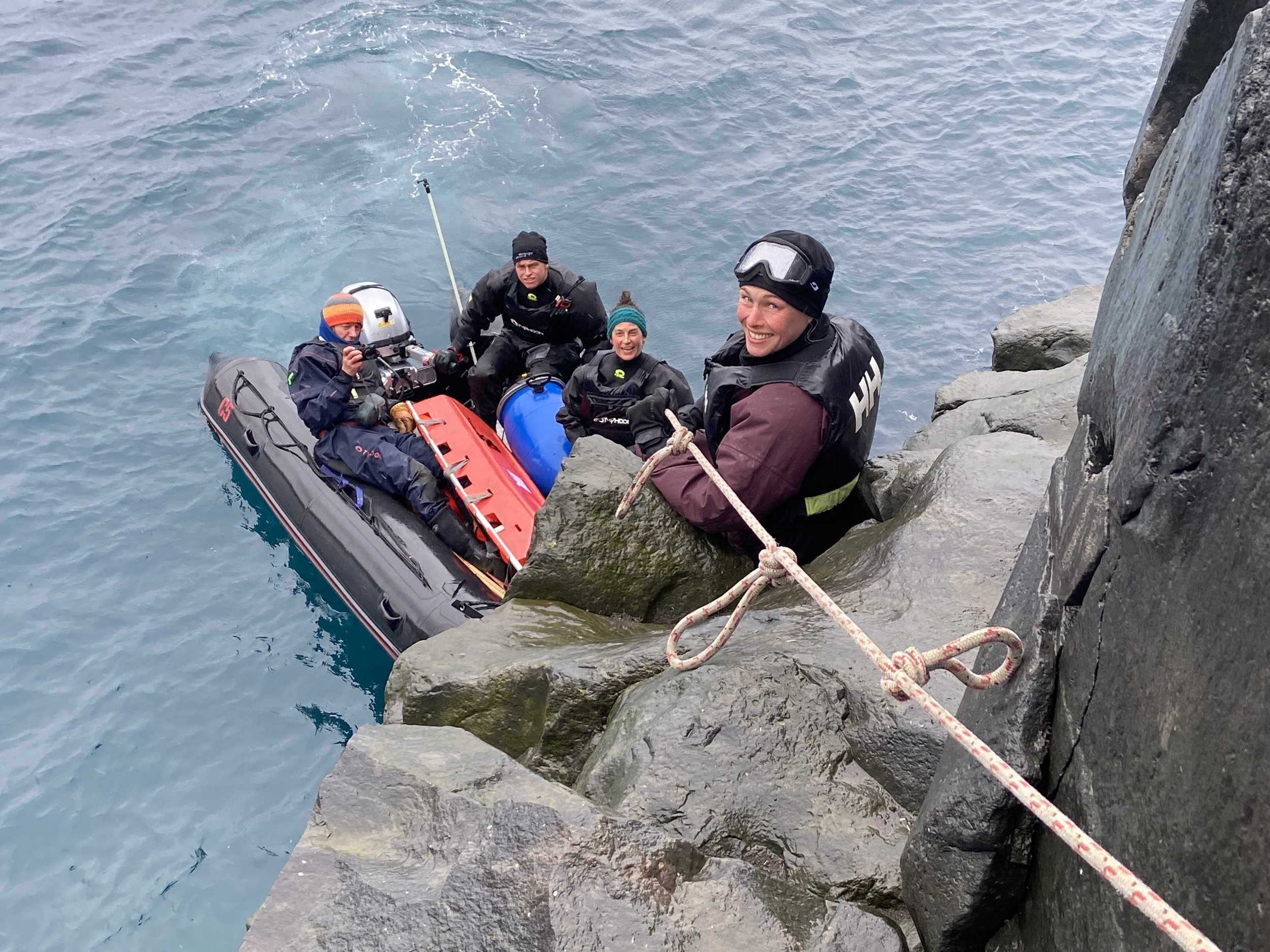Zavodovski Expedition. Third time unlucky? Possibly.
We finally arrived back into Port Stanley on December 28th, pushed along by a howling southwesterly gale, six and a half days on the return journey from King Edward Point (KEP) on South Georgia. This project to support a science team on the island of Zavodovski in the South Sandwich Islands, underslung below the main island was all about strong wind – trying to avoid it and then having to cope with it. And strong wind there was - lots of it.
Leaving the Island
In early December, after staging ourselves at King Edward Point, the administrative base for the South Georgia and the South Sandwich Islands, a monstrous low pressure system that bottomed out at 941mb began to move across the Southern Ocean right over the South Sandwich chain of active volcanic islands. In this weather condition there was no way to land and establish a camp on Zavo (as we call it), to avoid languishing at KEP in speculation (which is never good on these projects, better to get on with it) we sailed south on a gale force northwesterly to get below the weather at the Southern Thule archipelago, hard by 60 degrees south. This was a good move as KEP later reported 80 knots in the cove in Cumberland Bay two days later - a real humdinger.
We sheltered for two days, jogging (unable to anchor) in Douglas Straight, which is in fact a drowned volcanic caldera ringed by the dramatic high ground of Cook and Thule Islands, while the low moved across to the north. Sub-zero temperatures, snow storms and at times zero visibility made things sporty, but in fact this was a real bolt hole in this entire island chain that has otherwise no secure all-weather anchorages whatsoever.
Hoping for a Plan B landing on Thule to get some science in the can, was also scuppered as the landing in Ferguson Bay on the south coast was awash in heavy swell. Meanwhile, an extraordinary ‘march of the penguins’ kept us amused for the entire day as thousands of chinstraps were marching to and fro from their landing beach, one and a half kilometres across a glacial snowfield to their snow free nesting area on Herd Point.
Chris
As the low moved east of our longitude, the wind swung southwest and we broad reached straight lining west of the island chain straight to Zavo, a run of 15 hours. We anchored overnight off the northeast coast while the southwest blew itself out and next morning went to the same spot we anchored in last January (yes, this was our second trip here within the year!). Good holding in sand, bomb proof in winds from the westerly quadrant, but open roads is no exaggeration.
Landing spot
Tor
So began our landing on a steep cliff face and eventual lodgement in camp, supplied for 14 days with reserve in provisions, fuel, water and double the tents needed (which we did need!). Sadly, our time ashore was cut short to a week, with a deadline back in Stanley in consideration and as usual more weather on the way. The science got done, but compared to last January on Zavo and to our 10 days in the South Sandwich in 2020, this project was admittedly a struggle, a proper reality check albeit with more lessons learned.
Justino
A reliable, comfortable vessel and our dedicated Vinson crew of Chris, Mariana, Justino and Tor was the secret to our success in pulling off this project against some heavily stacked odds from the wind gods Boreas and Notus. And if any doubt that we were all alone and out on a limb in the Southern Ocean, check out Marine Traffic . . . . . . . . Our sailing crew - the best - had our lives in their hands.
Mariana and Tor
Once again, the Pelagic team on Vinson have proved the viability of facilitating serious science in remote areas using a small sailing vessel. This is not a place for a big ship operation and helicopter support is not allowed on any of the islands. We and a precious few colleagues with small boats are the only show in town.
Would I go back again? Absolutely! And, I just love camping!
Skip Novak
Expedition leader










